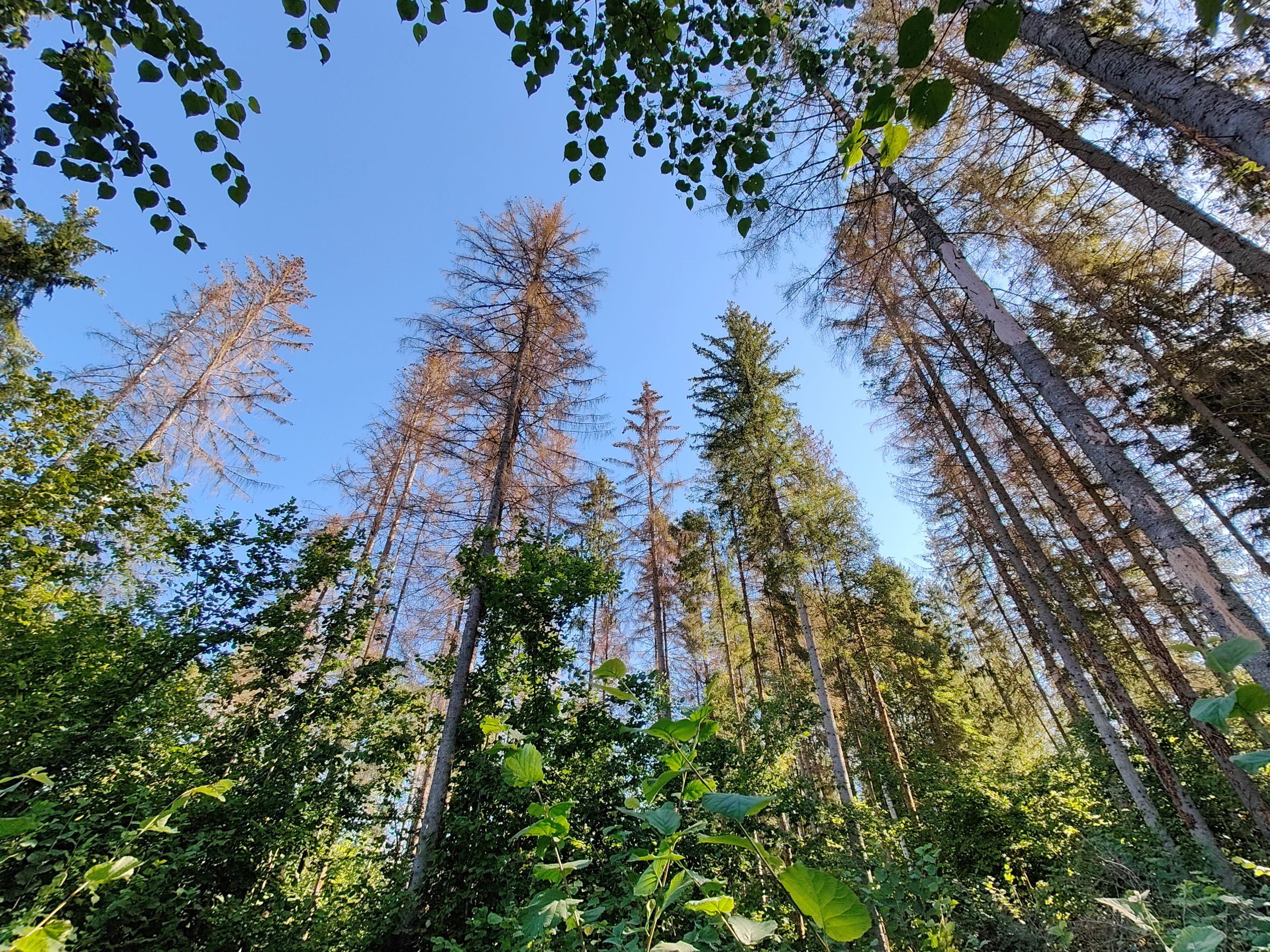
The European spruce bark beetle (Ips typographus) is one of the most damaging spruce pests in the whole of Europe. In healthy woods, its population is small, but in a forest damaged by storm, fire or drought, its population can grow very large. This beetle digs passages under the bark of the spruce tree, where it feeds on the inner part of the bark and thereby causes the spruce trees to dry out.
The long growing season and droughts of the last few years have caused the exceptionally large spread and damage of spruce bark beetles in Estonia. Their spread is not expected to slow down in the near future. Therefore, we must pay great attention to the health of spruce and mixed spruce forests. If spruce bark beetle damage is detected early and the wood has not yet dried, it can be used to make durable products. Standing deadwood can mainly be used as firewood.
Monitoring of spruce bark beetles
The Environment Agency, in cooperation with the State Forest Management Centre (RMK), monitors the bark beetle. For this purpose, special monitoring places have been established in each county in mainland Estonia. At first, trap trees are felled in March and then, depending on the weather (usually in mid-April), pheromone traps are installed near them. Attracted by the smell, the bark beetles fly there and get caught in the collection box in the trap. This way, those monitoring the beetles can count the insects caught in the trap.
More information
During the spring bird protection period, active (expanding) bark beetle infestations can be eliminated. In protected areas, the elimination should be considered based on the specific conservation objectives of the area, but in commercial forests, this is not a problem. If the forest is ready for cutting, a forest notification can be submitted, and clear-cutting can be carried out. If the bark beetle damage areas are small and can be eliminated through sanitation cutting, submit a sanitation cutting forest notification. If submitting the above notifications is not possible (the damaged forest is younger, or a sanitation cut would reduce the forest's relative density below 30%, or the damage elimination would result in a felling site larger than 7 ha, also considering neighboring felling sites), a forest protection expert assessment must be ordered, and the damage areas should be eliminated using the cutting method recommended by the expert.
The formation of larger felling sites is inevitable when eliminating bark beetle damage, and this must be accepted to prevent further damage.
All forest notifications are most conveniently submitted through the Forest register (in Estonian), where you can log in as a forest owner.